Wahl Ave. Named After “Grandfather” of Parks
Before Whitnall there was Christian Wahl, who helped create city’s parks system.
In 1899, after ten years of Christian Wahl serving as President of the Board of Park Commissioners, city officials were unhappy with his work and Wahl knew it. So, at his request, they renamed Park Avenue to honor him for his service on the board. Naming Wahl Avenue, which fronts on Lake Park, was meant to mollify Wahl when they replaced him as commissioner.
Wahl, born in Germany in 1829, came to Milwaukee with his family when he was 17. He left the city five years later and, until he retired in 1886, lived in Chicago, where he and his brother founded a glue and neatsfoot oil company. After selling the business to meatpacker Philip Armour, Wahl returned to Milwaukee a wealthy man.
There was a movement at the time to develop a park system in Milwaukee. Wahl, who had served as an alderman and on the Board of Education in Chicago, had ideas for Milwaukee parks. He advocated for a number of small parks rather than one huge park, as was the case with New York City’s Central Park. In 1889, Wahl and four others were appointed to the city’s new Board of Park Commissioners, which was given the goal of establishing a park system and a network of boulevards in the city. Wahl was chosen president of the commission.
In 1891, staff was added to help in the purchasing of land and, in the case of Lake Park, contracting with landscape architect Frederick Law Olmsted‘s Boston firm for the design of that park. Lake Park became Wahl’s favorite. He lived nearby and over the following years spent many days from morning until night supervising work at the park.
Wahl’s tenure as president of the board was increasingly criticized as time passed. In 1899, Mayor David Rose decided not to reappoint him to the board. Wahl’s involvement at Lake Park was one of the problems. Rose argued that, just as school board members did not teach classes, park board members were not supposed to be so involved in the construction of the park. Alderman Henry C. Schranck said Wahl should not “stand beside a laborer digging a hole and watch each shovelful.”
Wahl was also accused of sowing discord on the board and of being extravagant in spending taxpayers’ money. Other board members complained of Wahl’s actions and threatened to quit the commission if Wahl were reappointed. Rose said people should remember that Olmstead designed the park, not Wahl. The mayor also claimed that it would have been cheaper “for the city to have employed an expert landscape architect at a very liberal salary” as board president rather than Wahl, who was “nothing better than an amateur at best.”
Wahl responded that the appointment had become political because he was a Republican and Rose was a Democrat. Wahl also denied being financially irresponsible and enlisted his well-connected friends to come to his defense by putting pressure on other board members and elected officials. The ploy was unsuccessful. Wahl resigned and Henry Weber, owner of a Water Street saloon and restaurant, was picked to take his place on the board.
Wahl died in 1901, two years after Wahl Avenue was named for him. In 1903 a bronze bust of him was placed in Lake Park. In 1956, Wahl Park was created on W. Hampton Avenue at N. 47th Street and the bust was moved there. Wahl has been called the father of Milwaukee’s park system but a more accurate title would be grandfather. Charles Whitnall, who served after Wahl did, has long been considered the father of Milwaukee’s park system.
In 2001, a Wahl Avenue resident, Thomas (the Lumberjack) Ewart illegally cut down 18 trees in Lake Park that were obscuring his view of Lake Michigan. Ewart faced criminal charges for his actions but was able to avoid prosecution when he pointed out that deed restrictions for residents allowed them to have an unrestricted view of the lake. However, for taking the law, not to mention the saw, into his own hands, he was fined $2,500, and with attorney fees totaling $55,000, it cost him over $3,000 for each tree he felled.
Wahl Avenue
Carl Baehr, a Milwaukee native, is the author of Milwaukee Streets: The Stories Behind their Names, and articles on local history topics. He has done extensive historic research for his upcoming book, Dreams and Disasters: A History of the Irish in Milwaukee. Baehr, a professional genealogist and historical researcher, gives talks on these subjects and on researching Catholic sacramental records.
City Streets
-
Revised Milwaukee Streets Book Dishes the Dirt
 Nov 3rd, 2025 by Michael Horne
Nov 3rd, 2025 by Michael Horne
-
The Curious History of Cathedral Square
 Sep 7th, 2021 by Carl Baehr
Sep 7th, 2021 by Carl Baehr
-
Gordon Place is Rich with Milwaukee History
 May 25th, 2021 by Carl Baehr
May 25th, 2021 by Carl Baehr


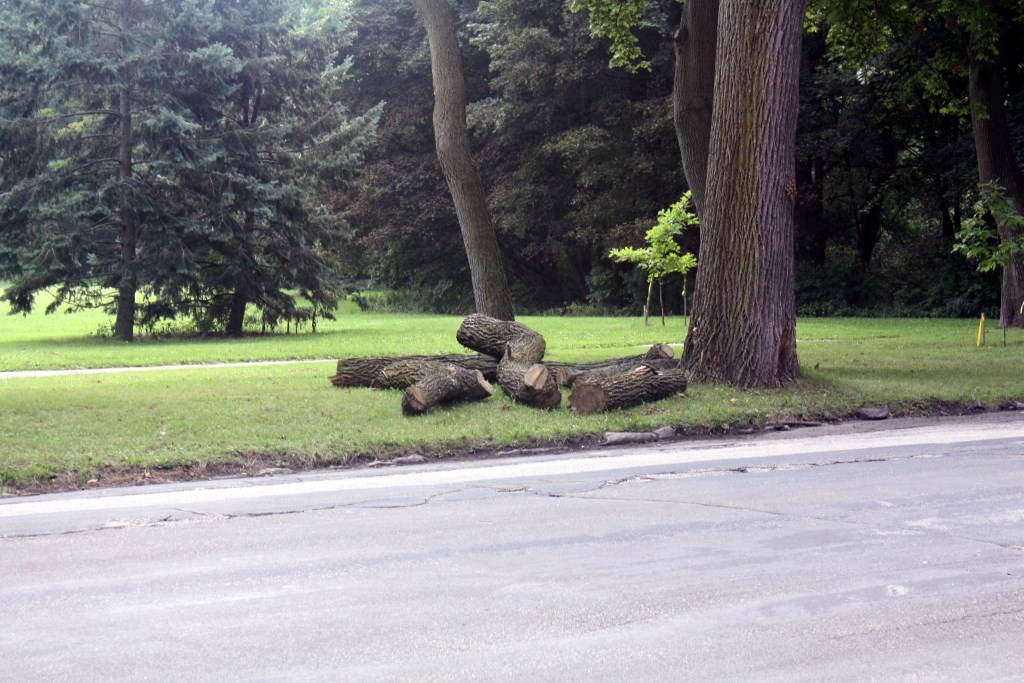
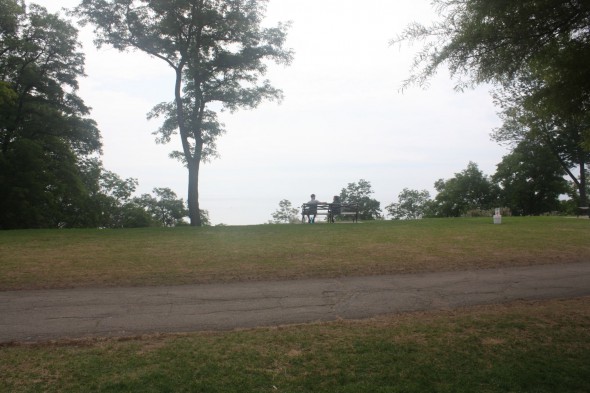
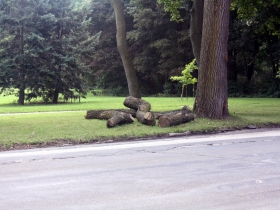
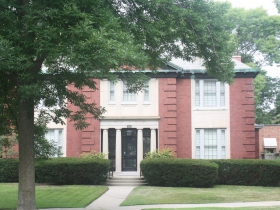
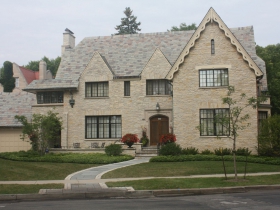
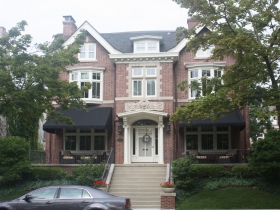
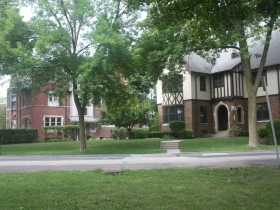
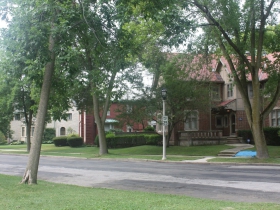




















Carl, another great recounting of Milwaukee history.Thanks for pointing out that the site for Sherman Park was indeed one of the original seven “planned parks.” I had read other accounts saying there were six, perhaps because it took decades before Sherman was actually designed and named.
A city historic district report on the Sherman Park historic district says that before Sherman Boulevard was realized as park commissioners had envisioned, the “park” was a natural area. The report also acknowledges Olmsted’s role in inspiring the park commissioners, including Wahl, to create boulevards as green spaces. It was a variation on the concept of “parkways” that Olmsted developed when planning Brooklyn’s Prospect Park and a scenic roadway leading to it. The difference was that parkways usually meandered while boulevards were straight. Both served the same purpose and Olmsted included both types in his designs.
http://www.city.milwaukee.gov/ImageLibrary/Groups/cityHPC/DesignatedReports/vticnf/HDShermBlvd.pdf
“This trend toward the increasing use of deed covenants coincided with the
development of the boulevard system in Milwaukee that produced such gracious
thoroughfares as Highland Boulevard, McKinley Boulevard, Washington Boulevard and
Newberry Boulevard, among others. The importance of wide landscaped streets or
boulevards as urban planning tools has its roots at least as far back as Renaissance
Europe, but the large scale, nineteenth century, government-sponsored rebuildings of
Paris and Vienna prompted American civic leaders to take a hard look at America’s
urban areas and formulate plans to make them more beautiful and livable. Such
influential individuals as Frederick Law Olmsted conceptualized boulevards as broad,
linear green spaces, essentially linear parks, which could connect or terminate at
spacious parks.”
I’ve also heard that Christian Wahl masterminded taking the train to Chicago to meet with Olmsted as he was designing the World’s Fair. Wahl et al managed to entice Olmsted to come to Milwaukee to design Lake, River and West (Washington) Parks. City planners were already on the same page about the linked park system concept so Newberry Boulevard had an easy conception.
Milwaukee’s legendarily corrupt Mayor David may not have approved of the parks commissioner but Wahl’s legacy’s ultimately seems far greater than the mayor known for his having cultivating prostitution as “entertainment” to draw male tourists.
Clarification: Make the reference in the last sentence above to Mayor David Rose. Was anything ever named for him?